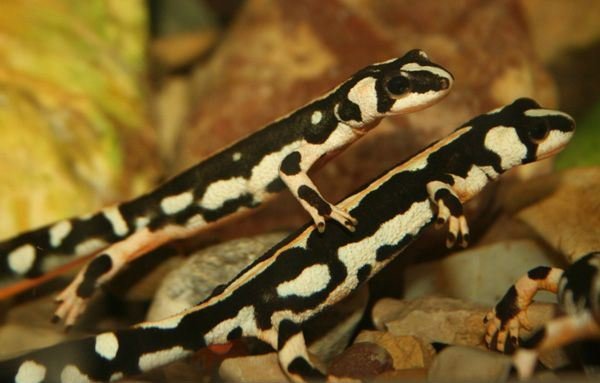New Year pet trade pushing Kaiser's mountain newt toward extinction

TEHRAN — The upward and disturbing trend of trading Kaiser's mountain newt, specially as the Iranian New Year is getting closer, is driving the precious species to extinction.
Also known as Lorestan mountain newt (Neurergus kaiseri) , the animal is listed as vulnerable by International Union for Conservation of Nature (IUCN).
Its population is considered to be severely fragmented, and there is a continuing decline in the extent and quality of its habitat, as well as a decline in the number of mature individuals due to overharvesting for the illegal pet trade.
Over the past few years, with the Iranian New Year holidays approaching, some harvest and trade the rare species illegally as pets and many other would purchase it to use it for ornament for their Haft Seen (an arrangement seven items on the table which start with ‘S’ in Persian language as well as gold fish, colorful eggs, candle and mirror).
Additionally some have even replaced the gold fish with Lorestan newt, while the animal cannot be kept in captivity and would soon die. There is no exact, official estimate for the number of Lorestan newt pet trade, however, it seems to be one of the main reasons for the species to be threatened with extinction.
Just recently, head of Tehran’s Department of Environment Mohammad Hossein Bazgir has called on law enforcement bodies to take action to prevent the illegal trade of Kaiser's mountain newt.
According to the Red List provided by IUCN, the species is endemic to the central Zagros Mountains of Iran with a circumscribed distribution area in the Lorestan and Khuzestan provinces is western and southwestern Iran. This species was believed to be relatively rare. When it was last assessed in 2008, it was thought that a dramatic decline has taken place between 1998 and 2008, when the population was estimated to number fewer than 1,000 mature individuals. Red List reported that the population has dropped by 80 percent in less than a decade due to the collection for the pet trade.
Kaiser's mountain newt lives in water, in springs, streams, water troughs and waterfalls. It does not leave the water for long. The streams are mostly surrounded by open patches of woodland with rock outcrops.
The major threat to this species is uncontrolled overharvesting for the national and international pet trade. Every spring an unknown number of this species is harvested for national trade. Habitat degradation and destruction present the other major threat caused by deforestation, utilization of habitats for livestock, dam construction and water abstraction for domestic and agricultural uses, introduced fish species, the use of some habitats for recreational purpose and mountaineering, eco-tourism, disturbance and pollution. All sites are more or less threatened by drought.
The stunning, marvelous species are native to small parts of Iran and losing them would cause their global extinction.
MQ/MG

Leave a Comment